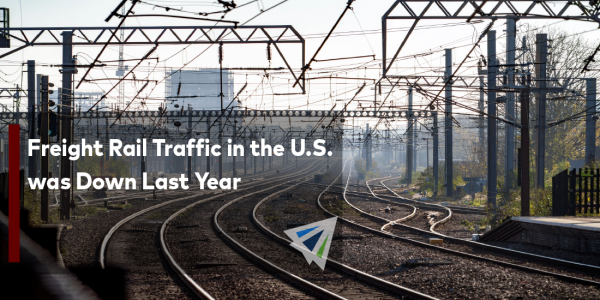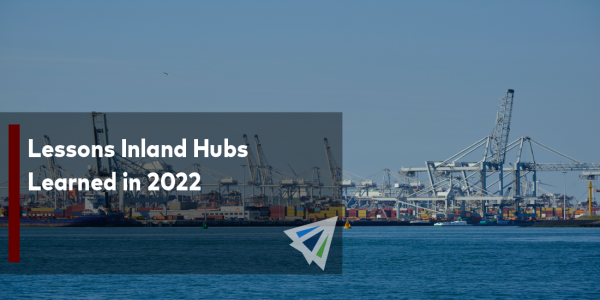Competitive Edge
January 18th, 2023
UPDATE: U.S. and Canada Ports – Number of Cargo Vessels at Anchor
• Vancouver: 43 Vessels at Anchor (-1)
• Savannah: 7 Vessels at Anchor (-3)
• Houston: 14 Vessels at Anchor (-7)
• San Francisco/Oakland: 6 Vessels at Anchor (-3)
• Los Angeles/Long Beach: 7 Vessels at Anchor (+3)
• New York/Newark: 6 Vessels at Anchor (0)
• Charleston: 1 Vessels at Anchor (-1)
Note: Count taken on January 17, 2023. This count does not include vessels moored and being unloaded at port docks. Colored numbers in parentheses represents the change from last week over. Data is courtesy of MarineTraffic’s live vessel traffic map.
Have another U.S. or Canadian port you’d like us to track weekly? Let us know!
Takeaways
• U.S. West Coast: Congestion on the USWC is minimal as demand stays soft. Low volumes have led Los Angeles and Long Beach to close their gates during first and second shifts on Friday and first shift on Saturday.
• U.S. Gulf Coast: In ways of marine traffic, Houston continues to see some attention. Any volumes moving in are typically still being diverted from WC destinations to GC and EC counterparts. Ironically, Houston has a dwell fee set to be implemented next month, while Los Angeles and Long Beach have long phased their similar programs out. Maybe, this will change shippers’ minds of WC routings if Houston’s fee is imposed.
• U.S. East Coast: No significant changes from last week. Consistency is key, and if we learned one thing this past year, it was certainly lacking on the EC and its up-and-down congestion just a few months ago. However, now it appears the EC is consistent in minimal vessel congestion.
• Canada: Vancouver remains obscenely congested. Internal issues continue to hamper Canada’s largest port. Wait times are in and around seven days.
IMPORT: Asia to North America (TPEB)
Recent Developments:
• Chinese New Year starts January 22.
• Contrary to pre-pandemic practices, shippers are opting to wait until after CNY to move their cargo as current inventories have satisfied current demand.
• West Coast contract negotiations between the International Longshore and Warehouse Union (ILWU) and Pacific Maritime Association (PMA) remain active. The existing labor contract between the two parties expired July 1.
Rates: Spot rates remain around pre-pandemic levels. Rates to the WC have leveled ahead of CNY.
Space: Space is open.
Capacity: Overcapacity is the current state of this trade. Blank sailings are now typical as a means from carriers to shed this excess market capacity and restore scheduling.
Equipment: Lower inbound volumes have brought relief to equipment deficits and congestion for both inland and coastal ports.
TIPS:
• Book at least two weeks prior to the ready date.
• Chinese New Year begins early this year and already low demand ahead of the holiday has led to some Chinese factories to shut down earlier than usual (as reported by local Chinese media).
• Expect blank sailings to be commonplace through Q1 2023.
IMPORT: Europe to North America (TAWB)
Rates: Rates continue to steadily fall as this market’s capacity increases while demand creeps low.
Space: Space to both U.S. coasts have opened up as U.S. congestion becomes minimal.
Capacity: Larger vessels have entered the market boosting the trade lane’s capacity. This applies for both Northern Europe and Mediterranean coasts to the USEC.
Equipment: Availability has improved on both sides of the trade. Europe’s inland hubs are steadily finding balance as well.
TIPS:
• Book at least three weeks prior to ready date.
• Even as market conditions stabilize, premium services (i.e., no-roll options and improved cargo reliability) should still be considered.
EXPORT: North America to Asia
Rates: Rates are stable if not slightly decreasing. They are not plummeting in this market like its inbound counterpart (Asia to North America).
Capacity: Capacity remains stable, but the market is not impregnatable to blank sailings.
Equipment: Most inland and coastal ports have balanced out their equipment availability, especially the latter. However, chassis issues remain at Chicago and Kansas City hubs.
TIPS:
• Book at least three weeks prior to the time of departure.
• While market conditions are improved, remain in close contact with your providers to be aware of any potential developments, like blank sailings.
Air Freight: 2023 Outlook
Demand: Demand is sitting low as we enter 2023 with volumes continuing to fall.
Capacity: Capacity is on the road to recovery as levels gradually imporve. A rebound in passenger travel towards the end of the year has helped pave this path. Certain shippers can move their cargo via passenger aircraft thus increasing overall market capacity.
Outlook: With the ocean freight market stabilizing–rates are down and congestion has improved–it is repossessing some of this lost market share it had to air freight. Demand for air freight is expected to remain muted for Q1 2023.
Weather: On a side note, we can’t rule out Mother Nature’s impact on supply chains. Weather conditions can play a role in affecting ocean and inland services. While air can also be hampered by similar effects, it can also provide shippers an alternative ode to rely on in certain weather conditions.
InterlogUSA Proudly Presents...FreightFM Podcast!
What is FreightFM? It’s a podcast dedicated to offering insights into breaking news, market trends, a closer look at our company, and much more!
Keep an eye out for a new episode coming soon. In the meantime, check out past episodes.
Did You Know: What Led to the Outage of an FAA Computer System Last Week?
Last Wednesday, the FAA halted all U.S. departing flights causing thousands of delays and cancellations.
This outage – which sends safety notices to pilots – was due to a damaged data file, as a result of a failure to follow government procedures.
Source: American Journal of Transportation
Freight News
Labor Talks Continue...will that continue to hinder cargo volumes on the USWC and push more to the other U.S. coasts?
Cargo diversions out on the U.S. West Coast first started in the beginning of 2022, due to the contract talks that were initiated in May. This continued into the year, as U.S. imports from Asia fell overall. Cargo volumes in the USWC plummeted more than 20 percent in November from the year before period, while the USEC and USGC saw lesser declines.
Where are the labor talks at now?
According to the JOC – the ILWU is “slow-walking” the talks until the National Labor Relations Board rules on a jurisdictional dispute between the ILWU and the International Association of Machinists and Aerospace Workers over about 25 jobs at Terminal 5 in Seattle. The ruling is estimated to be announced in a month or two.
With the labor talks continuing to linger, will that push more cargo towards other coasts?
It’s likely to be true that, at least for the first quarter, some will try to route as much of their discretionary cargo as possible through East and Gulf coast ports due to the uncertainties with the contract talks.
But another reason for the shifting of coasts, is the flexibility it allows cargo owners to be able to not rely just on one coast vs the others – it allows them to not “have all their eggs in one basket,” so to speak. Because, as we all have learned during the pandemic, flexibility and having options is key.
Retailers Grapple with Leftovers of Holiday Inventory
It was sort of a mixed bag this year for retailers and their holiday inventory. Certainly, could have been better for retailers but also could have been worse.
Many retailers dealt with unusually high inventory levels last year, which led to big discounts during the holiday season. It’s also anticipated that the inventory issues won’t be resolved until later this year, Insider reports.
With inflation still a factor, it will continue to play a role in driving retailers’ costs, which can impact consumers’ willingness to spend.
Additionally, a large amount of returns is expected to hit retailers, further adding to excess inventory. One reason for this larger amount of returns is due to people “bracketing” their purchases. Bracketing means consumers are buying more than one color or size of an item at a time, and then return what they don’t want.
Missed Last Week's Webinar? We Have You Covered!
Sign Up for Next Month's Webinar
Our next webinar will be on Wednesday, February 15th!
Keep an eye out for an announcement on topics we’ll be discussing next webinar and potential special guests!
We would like to hear from you. If you have any questions or topics you would like our experts to discuss in future webinars, please let us know!
Interlog  Insights
Insights
In last week’s newsletter, we discussed the outlook on air freight in 2023, shared new predictions, and stressed the importance container flow has on the supply chain.
Stay tuned this Friday for additional insights on these topics and more!
Sign up for our
industry answers
Our team works to provide valuable, unique, and relevant content to assist you in finding solutions. Sign up now.

